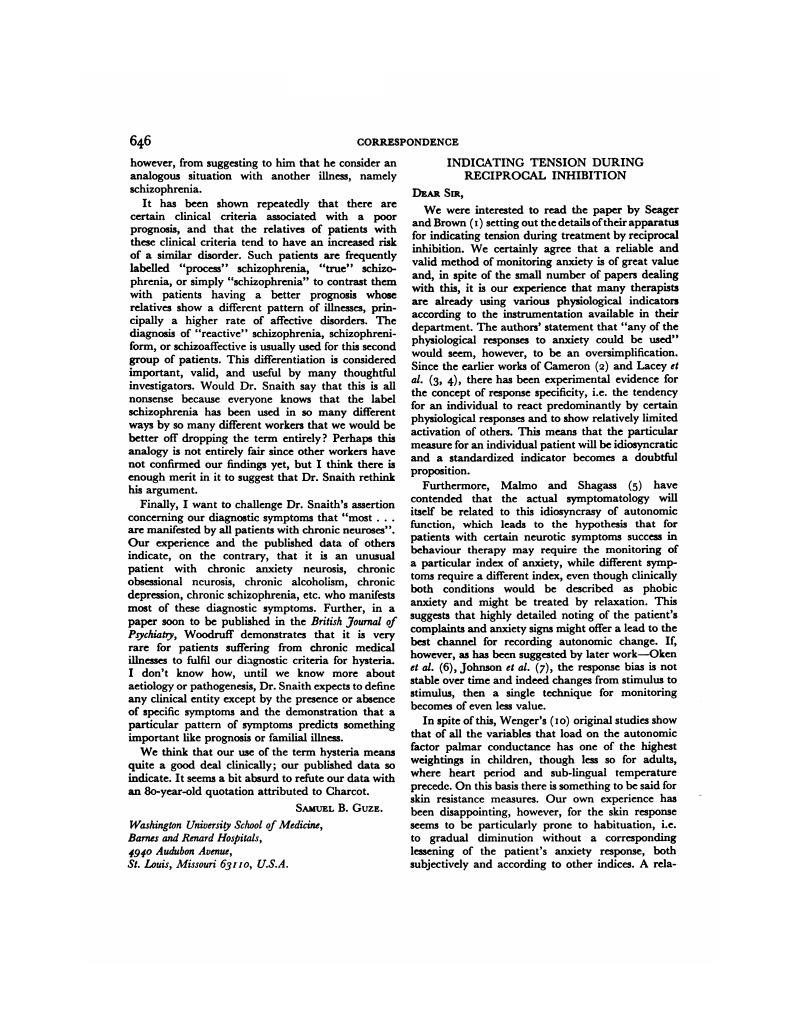No CrossRef data available.
Article contents
Indicating Tension During Reciprocal Inhibition
Published online by Cambridge University Press: 29 January 2018
Abstract
An abstract is not available for this content so a preview has been provided. As you have access to this content, a full PDF is available via the ‘Save PDF’ action button.

- Type
- Correspondence
- Information
- Copyright
- Copyright © Royal College of Psychiatrists, 1968
References
1.
Seager, C. P., and Brown, B. H. (1967). “An indicator of tension during reciprocal inhibition.” Brit. J. Psychiat., 113, 1129–1132.CrossRefGoogle ScholarPubMed
3.
Lacey, J. I., Bateman, D. E., and Van Lehn, R. (1953). “Autonomic response specificity: An experimental study.” Psychosom. Med., 15, 8–21.CrossRefGoogle ScholarPubMed
4.
Lacey, J. I., and Lacey, B. C. (1958). “Verification and extension of the principle of autonomic response stereotypy.” Amer. J. Psychol., 71, 50–73.CrossRefGoogle ScholarPubMed
5.
Malmo, R. B., and Shagass, C. (1949). “Physiological studies of symptom mechanisms in psychiatric patients under stress.” Psychosom. Med., 11, 25–29.CrossRefGoogle ScholarPubMed
6.
Oken, D., Grinker, R. R.
et al. (1962). “Relation of physiological response to affect expression.” Arch. gen. Psychiat. (Chic.), 6, 336–351.CrossRefGoogle ScholarPubMed
7.
Johnson, L. C., Hard, D. J., and Lubin, A. (1963). “Response specificity for difference scores and autonomic lability scores.” U.S.N. Med. N.P. Res. Unit Rep., Aug., 63–12.Google Scholar
9.
Wilder, J. (1957). “The law of initial values in neurology and psychiatry. Facts and Problems.” J. Nerv. Ment. Dis., 125, 73–86.CrossRefGoogle ScholarPubMed
10.
Wenger, M. A., Jones, F. N., and Jones, M. H. (1956). Physiological Psychology. New York: Holt.Google Scholar



eLetters
No eLetters have been published for this article.